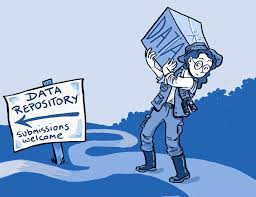06 Sep A Simple Guide to Making a Submission
What is a submission?
A submission is a representation of your organisation’s views related to the subject in question.
A submission is a formal way to have your say and put forward your view to help influence and change future policies. The submission may take many different forms, it could be gauging public opinion on a matter or asking for specific feedback on a draft policy.

Who asks for submissions?
Submissions occur at different levels of systems such as:
- World perspective: The World Health Organization calls for submissions from all over the world.
- Country: Central government may invite submissions on issues that will affect all New Zealanders, e.g. new taxes
- Regional: Local government may want your views on a local issue such as a new cycle lane. For example, local councils encourage public submissions on several items including short-term plans and annual plans.
- Local: Your local community group may call for submissions on an issue affecting the community, such as where to plant trees.
If you want to have other opportunities to engage with decision makers, then submitting a formal written submission is an essential first step.
Investing in writing a submission is an opportunity to:
- open a door to people who you wouldn’t normally get to influence
- introduce your organisation and purpose
- engage with others in a similar playing field
- make new contacts and build networks
- share data, research, concerns and innovative ideas with decision makers
- have your issues heard
- influence the decision and the outcomes
Once a decision has been made it is much harder to influence. Your influence will then be tinkering with the detail and around the margins so make the most of the opportunity at the front of the process.
How to go about writing a submission
- Your submission will usually be part of your organisation’s overall strategy and will be matched to the core values and vision.
- Align your approach to the resources available, e.g. you may wish to respond to a limited portion of the submission if you have expertise in one area
- Use your networks to find out who else will be preparing a submission. Plan to share resources, e.g. information, research or useful links beforehand to strengthen your approach.
- Find someone who can help you with the process, e.g. someone with access to a university library complete a literature search for you.
- Most responses are submitted online by answering a series of set questions. You are wise to also reinforce your views through an oral submission.
Tips to make your submission as effective as possible
- Engage early
- Provide perspective
- Be proactive
- A submission is an opportunity to submit data and an understanding of the issues from your own individual or organisation’s perspective. If you have facts or research, then use them to support your points.
- You may wish to contribute ideas for solutions and the implications of these but equally, this could be an opportunity to voice your concerns without offering a solution.
- State the obvious. Your key concerns may not be obvious to others.
- Know your audience and who you are trying to influence. Know who will read your submission and use language relevant to those you wish to influence. Avoid using acronyms familiar with your sector.
Timing
A key to a good submission is getting the timing right. Engage early and be ready to start. Often you think you have plenty of notice but still find yourself in a mad scramble at the end to achieve deadlines.
Be prepared for last minute changes. Sometimes new evidence will come to light at the end of the process which you may wish to include.
Know your internal timelines and procedures. Who needs to approve your submission? Be prepared to make last-minute adjustments based on feedback. If your board need to approve the submission, then ensuring it is on the next meeting agenda is the vital first step in the process of having it approved.
Timeframes are usually strict however sometimes the timeline is extended.
Submitting your submission earlier than the deadline can somethings enable the formulations of an earlier engagement. If the review panel wants more information they may ask for it before the closing of the submission giving you another opportunity to provide information.
If you have limited resources to dedicate to a submission
Consider supporting wider action, e.g. a joint submission with other like-minded organisations. Presenting as a group of like-minded organisations can have the power of numbers or consider adding a statement to someone else’s submission or sending in a letter supporting another organisation’s submission.
To ensure your submission has maximum impact
14,000 submissions were made on the Zero Carbon Bill, imagine having to read them all.

Therefore, a quality submission must be:
- Consistent
- Positive in tone
- Clear
- Accurate
- Evidence-based
- Well proofread
- Clearly formatted
- Professional
- Logical
- Have structure
- Stay focused on the issue and relevant to the questions being asked.
- Bullet points are useful to save space and create more white space to enhance the reading experience.
Don’t be put off by trying to be solution orientated. The submission process isn’t always about solutions and identifying the issues may be more beneficial.
Follow the format required. If the submission requires certain questions to be answered, then do as you are asked otherwise your points may not make it through the process.
To highlight your points
- Tell stories, provide quotes or provide sound bites
- Detail technique issues
- Include an executive summary
- Provide appendices
- Include photos to illustrate your points
Before submitting your submission ask yourself
- How will this submission be received?
- Have I explained who my organisation is?
- What are the risks to my organisation?
- What else can I do to influence the decision?
The image you leave behind is vital. A submission is a stamp of the organisation and once it is in the public domain it is there for others to see.
Article written by Alison Pask, September 2018

